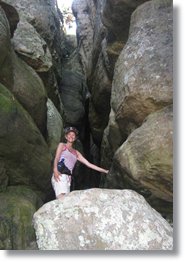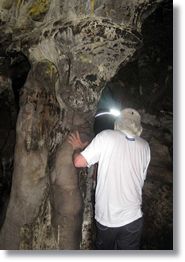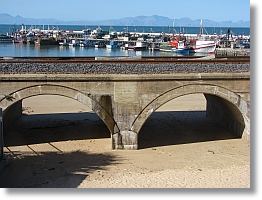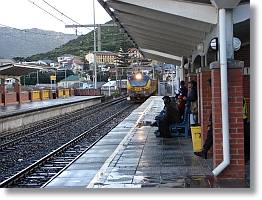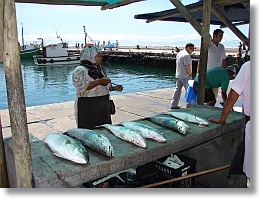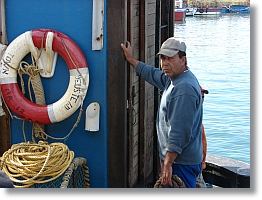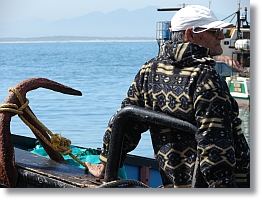- HOME
- CONTACT US
- Comments
- Cape Town
- Cape Town at night
- Stellenbosch
- Simons Town
- Kalk Bay
- Hermanus
- Genadendal
- Greyton
- Paarl
- Franschoek
- Mamre
- Butterfly World
- World of Birds
- The Argus Tour
- flora and fauna
- West coast spring flowers
- Big-and-small-five
- Space Photography
- South Africa geography
- Cape Carnival
- Penguin rescue
- dolphin-killings-in-denmark
- Cape Town Weather
Menu
Kalk Bay
Kalk
Bay ( lime bay ) takes its name from former years when kilns were
burned there in order to produce lime from shells for painting
buildings. Quite a number of the white-walled homes of the Cape owed
their smart appearance to the lime from Kalk Bay.
The Village had its beginning as a simple place along the rough coastal
track. In 1806 Abraham Kloppers, who had started to catch and dry fish
as rations for slaves. A number of Filipino sailors who had been
shipwrecked, also settled at Kalk Bay.
The mountain massif dominating the Muizenberg to Kalk Bay stretch of the False Bay Coast is a suberb recreational area for the energetic walker, cave explorer and nature lover.
Clovelly Cave with its labyrinth of passages and chambers was
sufficiently well known to be considered haunted by the local coloured
folk. Apparently a half-demented old mountain hermit had once made his
home there and had amused himself by stealthily approaching visitors on
the mountains and scaring them out of their wits with his sudden
chuckle close behind them.
Eventually
he was found dead in his cave. The sinister echo of his chuckle is
reputed to linger on in the cave, and it is said that a cold hand
touches any interloper’s shoulder the moment his light goes out. Not
forgetting, the amazing Boomslang Cave, penetrating right through a
ridge for 146 m, which was discovered in 1911 by Arderne and Sampson.
The cave was named, after their discoverers disturbed a boomslang ( tree snake ) quenching its thirst in a puddle at the southern exit high over Fish Hoek.
Boomslang cave pictures courtesy of June Arderne. June's great - great grandfather was actually the Arderne who found the cave in 1911.
Web design and publishing by Ernst Weinert
